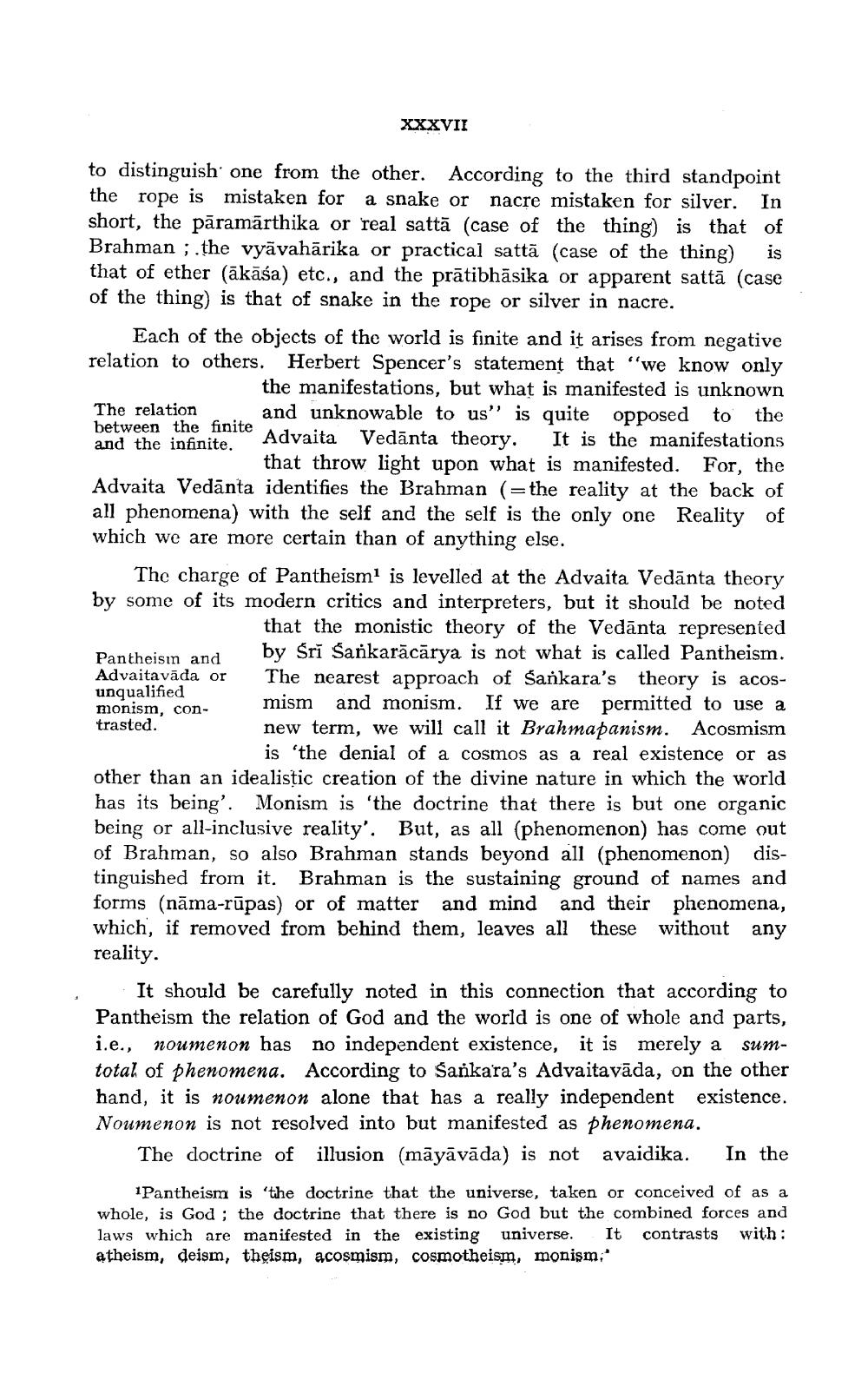________________
XXXVII
to distinguish one from the other. According to the third standpoint the rope is mistaken for a snake or nacre mistaken for silver. In short, the pāramārthika or real sattā (case of the thing) is that of Brahman ;.the vyāvahārika or practical sattā (case of the thing is that of ether (ākāśa) etc., and the prātibhāsika or apparent sattā (case of the thing) is that of snake in the rope or silver in nacre.
Each of the objects of the world is finite and it arises from negative relation to others. Herbert Spencer's statement that "we know only
the manifestations, but what is manifested is unknown The relation and unknowable to us' is quite opposed to the between the finite and the infinite.
Advaita Vedānta theory. It is the manifestations
that throw light upon what is manifested. For the Advaita Vedānta identifies the Brahman (=the reality at the back of all phenomena) with the self and the self is the only one Reality of which we are more certain than of anything else.
The charge of Pantheism is levelled at the Advaita Vedānta theory by some of its modern critics and interpreters, but it should be noted
that the monistic theory of the Vedānta represented Pantheisin and
by Sri Sankarācārya is not what is called Pantheism. Advaitavāda or The nearest approach of Sankara's theory is acosunqualified monism, con
mism and monism. If we are permitted to use a trasted.
new term, we will call it Brahmapanism. Acosmism
is 'the denial of a cosmos as a real existence or as other than an idealistic creation of the divine nature in which the world has its being'. Monism is the doctrine that there is but one organic being or all-inclusive reality'. But, as all (phenomenon) has come out of Brahman, so also Brahman stands beyond all (phenomenon distinguished from it. Brahman is the sustaining ground of names and forms (nāma-rūpas) or of matter and mind and their phenomena, which, if removed from behind them, leaves all these without any reality.
It should be carefully noted in this connection that according to Pantheism the relation of God and the world is one of whole and parts, i.e., noumenon has no independent existence, it is merely a sumtotal of phenomena. According to Sankara's Advaitavāda, on the other hand, it is noumenon alone that has a really independent existence. Noumenon is not resolved into but manifested as phenomena.
The doctrine of illusion (māyāvāda) is not avaidika. In the
1Pantheism is 'the doctrine that the universe, taken or conceived of as a whole, is God; the doctrine that there is no God but the combined forces and laws which are manifested in the existing universe. It contrasts with: atheism, deism, theism, acosmism, cosmotheism, monism."




